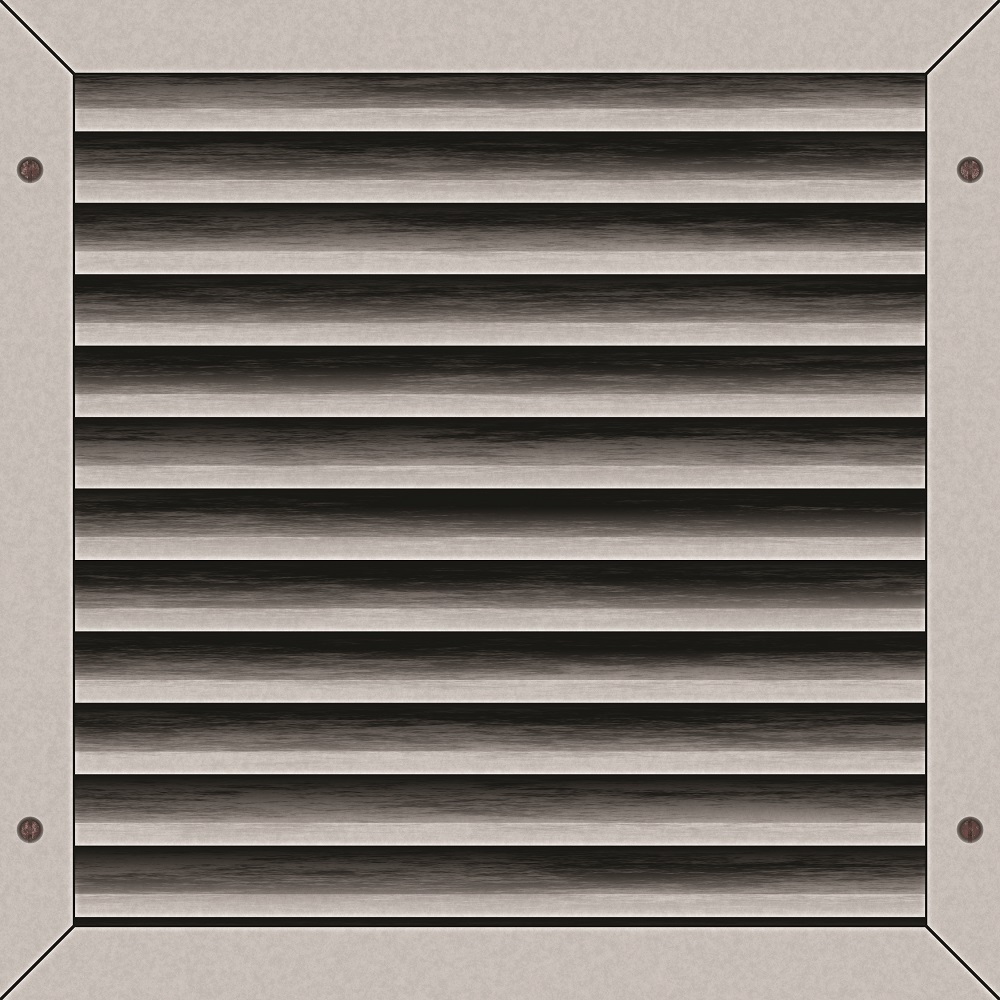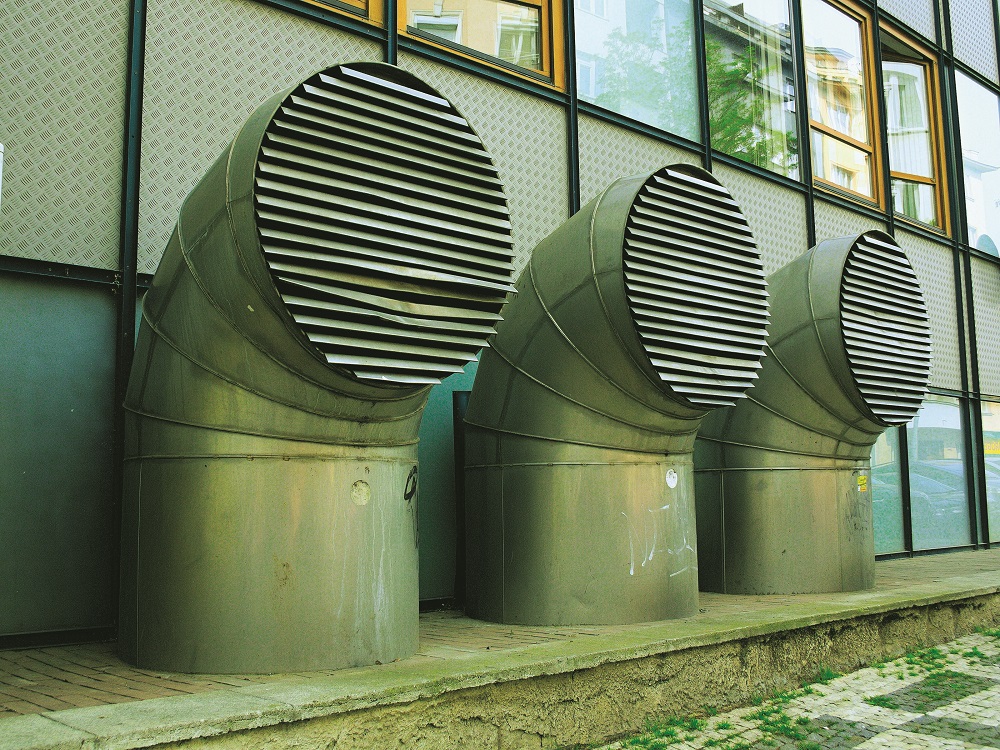While mega events in the region will register a market surge for grilles and diffusers, air distribution systems will also continue to enjoy a steady demand, as they play a pivotal role in ensuring occupant comfort and better IEQ, while aesthetically blending into the architecture of a built environment.
It appears that these days, one cannot help but allude to Dubai EXPO 2020 and Qatar 2022 FIFA World Cup, when attributing a spurt in demand for construction and HVACrelated services, products and components in the region. And rightly so. The two mega events are, indeed, the main market drivers. But when it comes to air distribution systems, such as grilles and diffusers, one may begin by invoking the two events, but it doesn’t have to stop there.
Growth drivers
Beyond the arenas, stadiums and exhibition areas, and beyond hospitality and airport projects planned around the events, there is a steady, albeit imperceptible growth in the residential and commercial construction sectors, with buildings of all denominations raising their heads, as cities are expanding, economic fluctuations notwithstanding. And grilles and diffusers are required in these projects, echoing the demand for air control and duct accessories, and will continue to reap the growth dividend.
 Add to this Dubai’s ambitious drive to retrofit 30,000 buildings by the year 2030, which includes HVACR retrofit projects, and you have a regional market for grilles and diffusers in the foreseeable future.
Add to this Dubai’s ambitious drive to retrofit 30,000 buildings by the year 2030, which includes HVACR retrofit projects, and you have a regional market for grilles and diffusers in the foreseeable future.
Worldwide, the Asia-Pacific region is expected to spur the growth in the air distribution sector, again hypothecated to construction activities and better economic outlook.
When it comes to selection
David A John, an authority on the subject, highlighting the finer points involved in selecting the right kind of grilles and diffusers, warns, “An air-distribution system that provides occupant thermal comfort can be a complicated system to predict and analyse.” He then goes on to explain: “Providing comfort depends on variables from the obvious thermal conditions in a space, which include radiant temperature, air speed, air temperature and humidity, to the less obvious occupant metabolic rate and even choice in clothing. A system can be successfully designed by understanding what makes us comfortable and selecting the proper air-distribution products and layout.”¹
There is more to selection of grilles and diffusers than meets the eye, as is borne out by John’s caveat. However, shorn of all ramifications, it is predicated to three main factors, both technical and non-technical – performance, aesthetics and cost, not necessarily in that order – if selection pattern is any indication. Delivery time could also influence product selection in certain cases.
It is self-evident that an inferior system with incorrect design or placement leads to an unevenly distributed air, accompanied by noise
The cardinal rule of selection depends, or needs to depend, on the physical space where the systems are going to be used, their design vis-à-vis efficiency and their placement. Once the right systems are selected, their placement will determine the distance the air will travel and how much of area they will cover. Since indoor environmental quality (IEQ), thermal comfort and acoustics directly affect the occupant’s well-being and productivity, placement and performance of the systems are of prime importance. It is self-evident that an inferior system with incorrect design or placement leads to an unevenly distributed air, accompanied by noise.
Corroborating this, but delving deeper, Jim Aswegan and Randy Zimmerman say: “The design, selection, and installation process of an air-distribution system can be advanced by understanding the principles of human comfort. In general, when a person is comfortable, thermal conditions in the space allow the body’s heat loss to equal the body’s heat production. Because the human body loses heat through radiation, conduction, convection and evaporation, space factors of dry bulb and radiant temperature, relative humidity and air motion are important to the occupant’s comfort. … Another important factor in the selection process is sound.”²
Along with the quality of the product, and sometimes divorced from it, aesthetic considerations influence product selection. This could lead to a tussle between architectural compulsions and engineering demands for better airflow – the correct introduction of air into a space to avoid the possibility of creating localised hot or cold spots – and improved acoustics. In such cases, custom-designed grilles could be the answer.
Price, at what cost?
The nub of the problem, however, is predictably the price tag, often over-weighing all other considerations, including quality and performance. Compromise on the quality to reduce the cost poses a challenge not only to engineers, who need to deal with substandard products, but also established manufacturers of grilles and diffusers, as they are forced to compete with cheaper substitutes flooding the market.
Another challenge in the region, as probably elsewhere in the world, is products not being tested in accordance with internationally accredited standards in a primarily price-driven market, rather than a specifications-driven ethos.
 It is not rocket science to deduce that the additional capital cost incurred for procuring efficient air distribution systems that have been properly tested and certified is worth it in the long run.
It is not rocket science to deduce that the additional capital cost incurred for procuring efficient air distribution systems that have been properly tested and certified is worth it in the long run.
John points to other, indiscernible but incremental savings when he says: “Using proper air-distribution device selection methods can… reduce the number of devices. This has the added value of reducing the amount of ductwork required and the associated accessories and labour. These savings can be accomplished by the designer without a significant amount of additional design time.”¹
In his erudite journal article ‘Selecting Air- Distribution Outlets: Designing for Comfort’, John, under the section tellingly titled ‘Cost of Discomfort’, says: “A review of existing literature found that the effect of comfort on productivity generally covers ventilation rate and temperature. The literature suggests that the potential annual saving or productivity gain (in 1996 US dollars) can be as much as USD 20 to USD 160 billion.1.1 The financial costs due to reduced productivity associated with occupants’ thermal discomfort are significantly greater than the costs due to the much-publicised sick building syndrome.”¹
Change is in the air
Though not appreciable enough to be termed a marked trend, there’s a growing awareness that quality outweighs cost, that has emerged from the groundswell within the HVAC industry about IEQ and occupant comfort, spurred by a wide dissemination of knowledge via discussions at industry stakeholder conferences and other forums. The end-users themselves, on their part, are becoming discerning about the efficacy of an even distribution of air and the importance of low noise levels in the indoor space. This has led to the realisation that grilles and diffusers play a vital role in thermal comfort and better IEQ and acoustics.
Additionally, struggling to keep afloat and remain relevant in a highly competitive market, manufacturers are now earmarking funds for R&D to come up with better features to enhance indoor air quality and thermal comfort. Supply-air outlets are already available with adjustable pattern controllers that are designed to deflect air in different directions. Other changes have evolved over the years, like integrating light in the diffusers, as also fitting them with sensors so that they adapt to the conditions of a built environment. There are products in the market that help reduce the velocity of the incoming airflow, thus reducing the noise level a system creates.
Governments in the region, too, are initiating stringent regulatory requirements and rigorous testing standards to ensure better product quality.
In a nutshell, there is an all-round awakening that one can opt for inferior air distribution systems at one’s own peril. This augurs well for all – be they manufacturers, specifiers, project developers or end-users.
References:
1.1. Fisk, WJ. ‘How IEQ affects health, productivity. ASHRAE Journal, 44(5). 2002. (Cited in above article by David A John)
(The writer is the Associate Editor of Climate Control Middle East.)
Copyright © 2006-2025 - CPI Industry. All rights reserved.